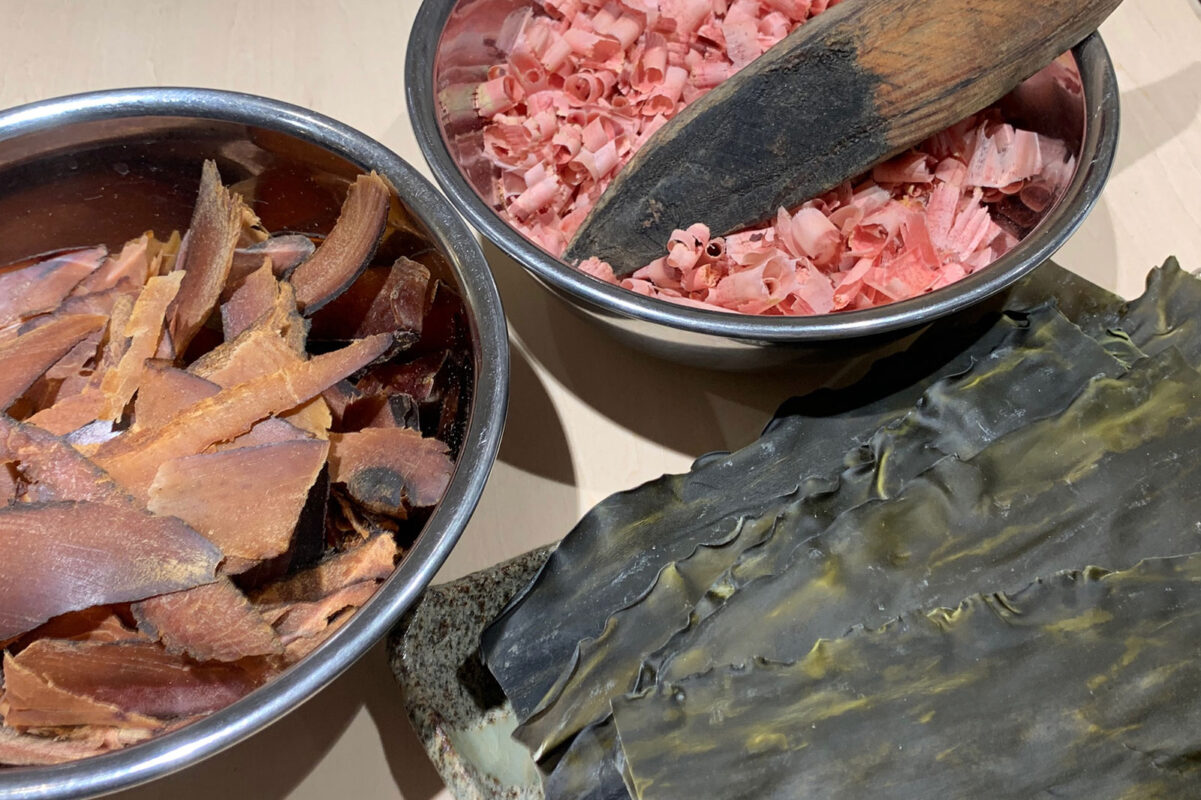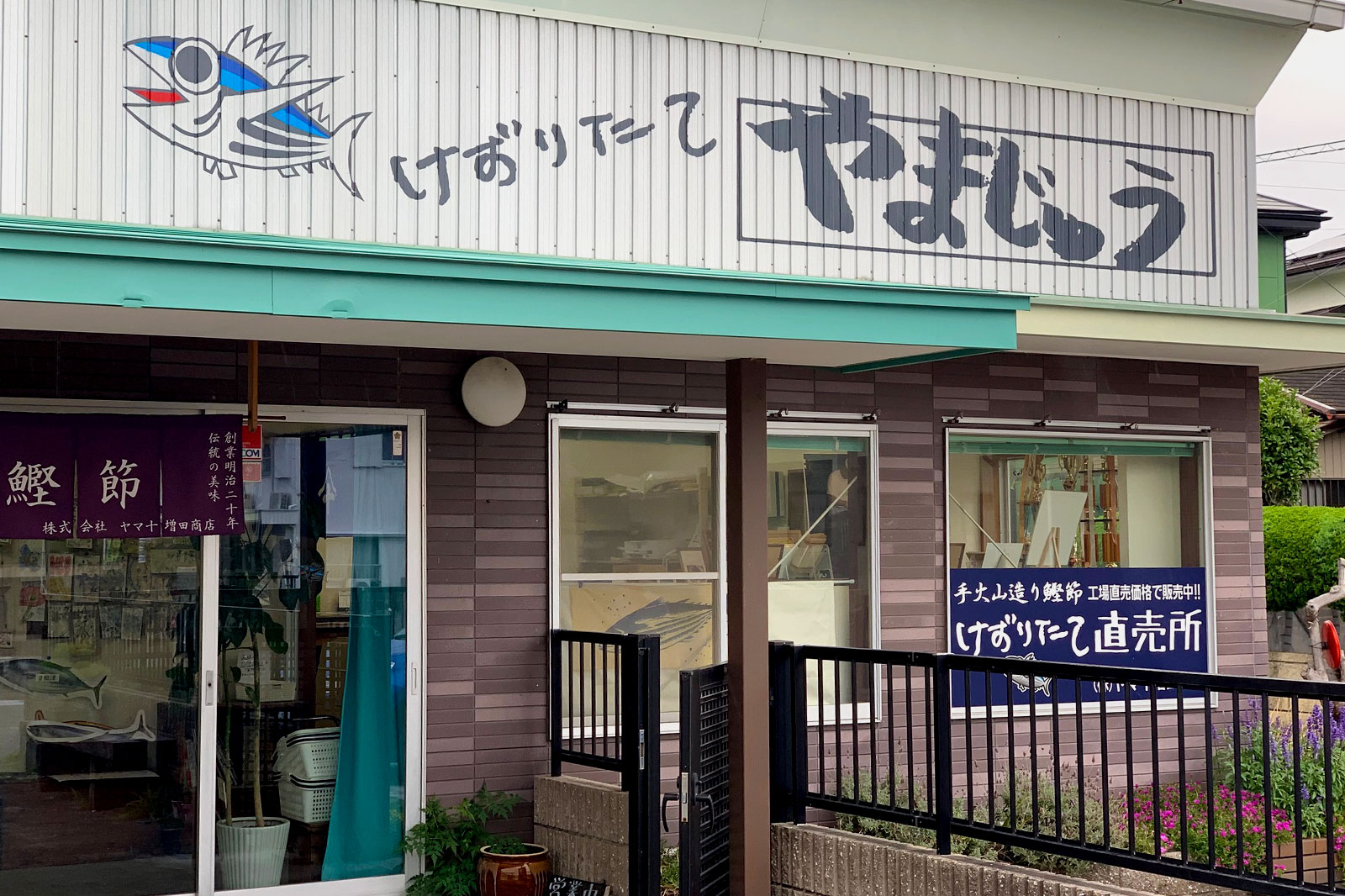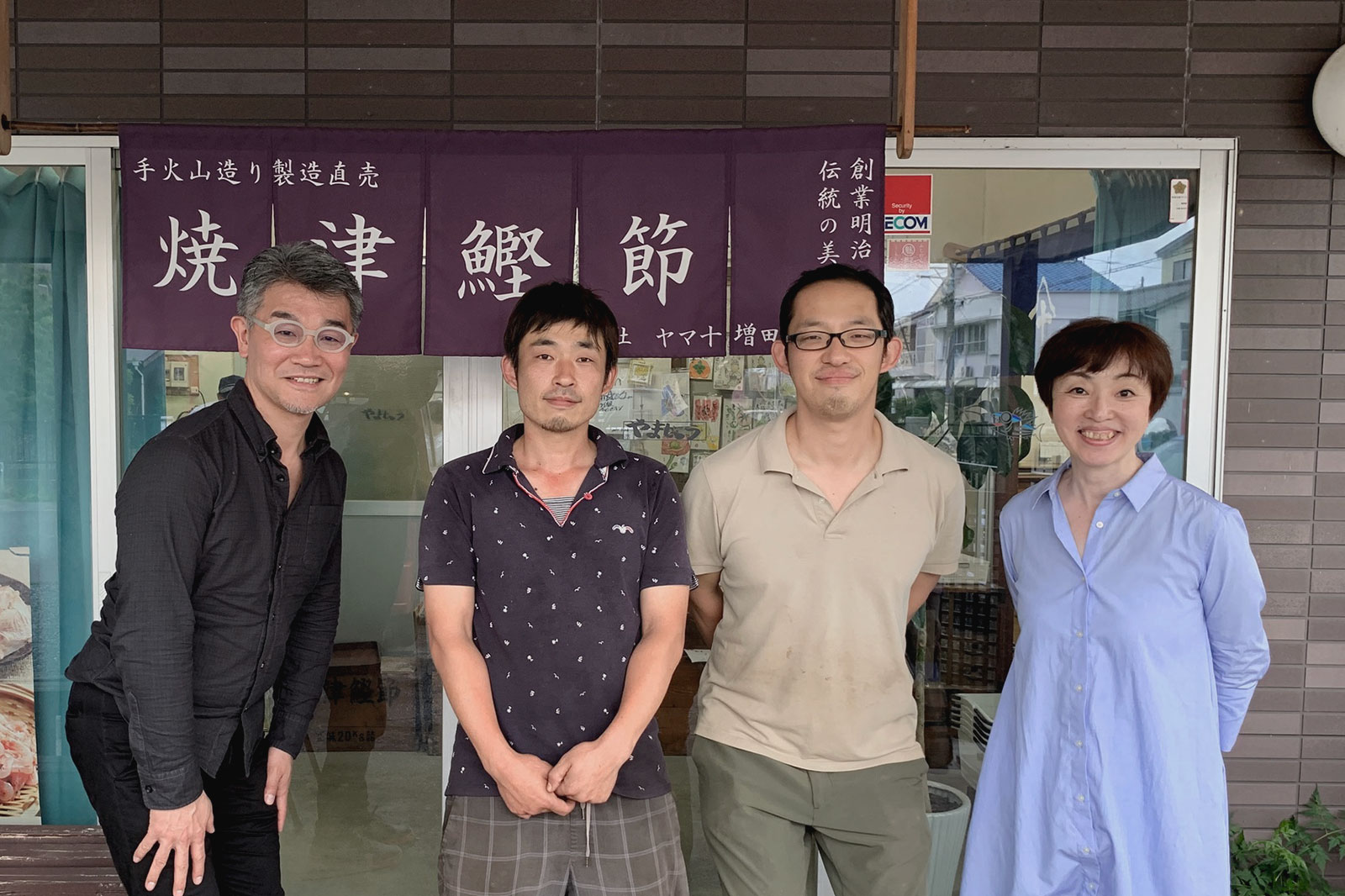What do you believe is the essence of Japanese cuisine?
Many people might think of colorful sushi or freshly fried tempura. However, there is an element that supports the foundation of these brilliant dishes, an element that can be called the very heart of Japanese cooking. That element is dashi.
At Chagohan Tokyo, we believe that the entire universe of Japanese food culture is condensed into our dashi, and particularly, into the kake-tsuyu broth that is the deciding factor in the taste of our handmade soba. Why is our class more than just a simple cooking experience? Part of the answer is hidden in the story of our quest for this single bowl of broth.
The Quest for the Ultimate Aroma: An Encounter with Honkarebushi from Yaizu, Shizuoka
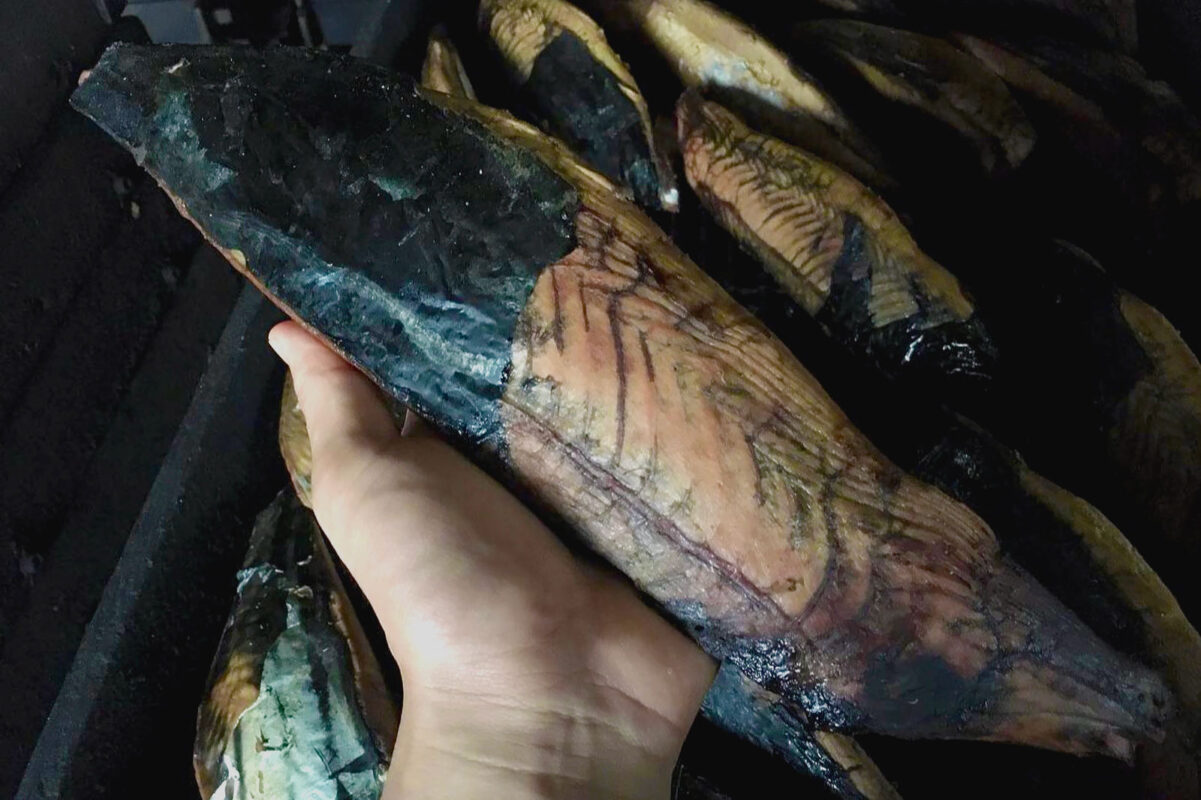
As a soba master, the longest part of my journey in pursuit of the ideal kake-tsuyu was the selection of the katsuobushi (dried bonito flakes). After trying katsuobushi from all over Japan, I finally arrived at the Honkarebushi (true-dried, fermented bonito flakes) made by “Yamajuu” in Yaizu, Shizuoka.
Why Yaizu? The reason is the overwhelming kunkō (smoky fragrance) that rushes through your senses the moment you taste it. In Yaizu, a very labor-intensive and traditional method called Tebiyama-zukuri is still passed down today. In this method, skilled artisans smoke and dry the bonito over a burning wood fire, never leaving its side, as if creating a direct dialogue between the flames and the fish. This almost primitive process is what gives birth to a powerful yet elegant aroma and a deep umami that can never be achieved through machine drying.
This Honkarebushi, which one could say is imbued with life, is the unwavering protagonist of our broth.
The Profound Source of Umami: The Quiet Assertiveness of Rishiri Kombu from Hokkaido
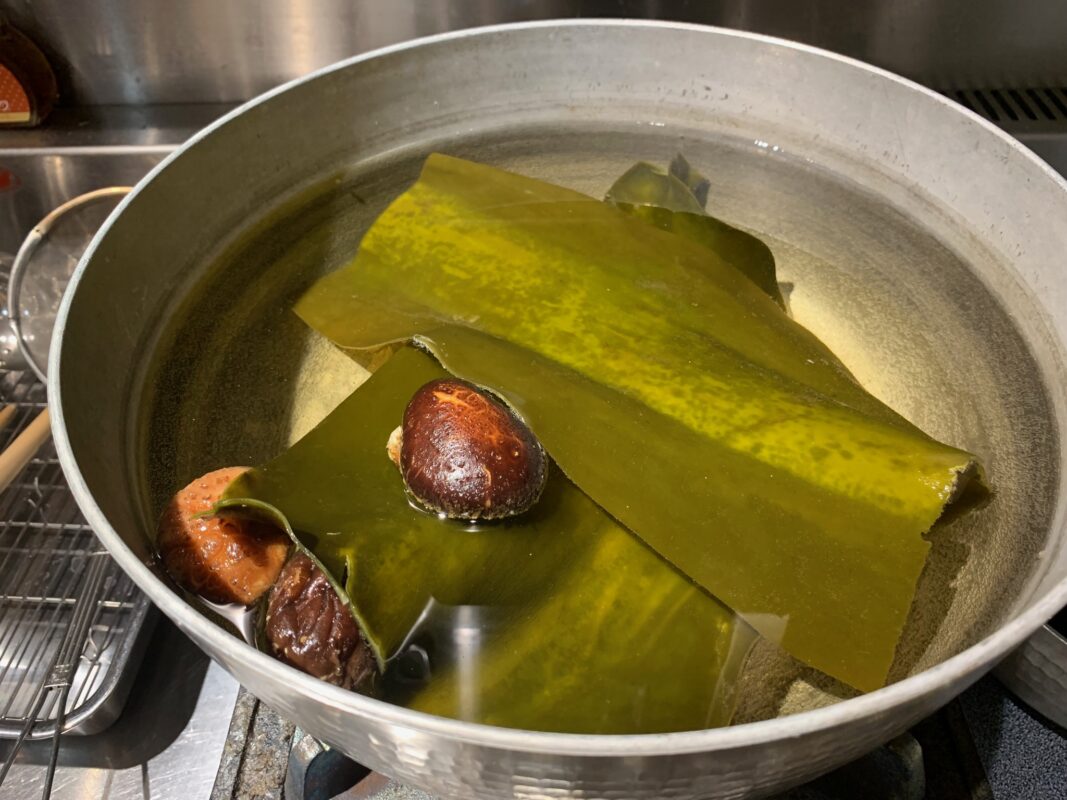
To properly receive the powerful aroma of the katsuobushi, a partner with equal strength and dignity is required. That partner is the natural Rishiri Kombu from Hokkaido.
Among the many types of kombu, the dashi extracted from Rishiri Kombu is known for being clear, yet possessing a dignified and powerful umami. Its refined flavor never interferes with the rich aroma of the bonito flakes; rather, it gently draws out the umami hidden within, giving the entire flavor profile depth and breadth.
The “dynamic” umami of the katsuobushi and the “still” umami of the kombu. Only when these two meet in perfect balance is the framework of our ideal dashi truly complete.
A Once-in-a-Lifetime Harmony: The Magic of 1°C Extraction and “Kaeshi”
Even with the finest ingredients, the best dashi is not guaranteed. To draw out its true potential requires a delicate technique where not a moment’s lapse in attention can be afforded.
When we make our dashi, we strictly control the water temperature in 1°C increments. If the temperature is slightly too high, the kombu will release bitterness and slime; if it’s too low, the umami components will not be sufficiently extracted. Listening to the voice of the ingredients, sensing even the day’s temperature and humidity, we identify the single most brilliant moment. It is truly a once-in-a-lifetime, earnest duel.
Finally, what breathes life into this carefully extracted dashi is our secret kaeshi (a matured soy sauce base for soba, made with soy sauce, sugar, and mirin). The moment the dashi and kaeshi dissolve into each other, their sharp edges melt away and they become one mellow, unified liquid—that is when our kake-tsuyu is complete.

A single bowl of kake-tsuyu. It contains the rich blessings of Japan’s seas, the unwavering tradition of its artisans, and all of the philosophy and love we have for our cuisine.
At Chagohan Tokyo, our classes go beyond simply following a recipe. By understanding the story behind each ingredient and every process—why this ingredient, why this method—your understanding of Japanese cuisine is sure to be elevated to a new dimension.
If you wish to learn authentic Japanese cuisine, why not begin by journeying with us into the world of dashi, its very heart?
→ View the new classes and prices → View the new Private classes and prices

